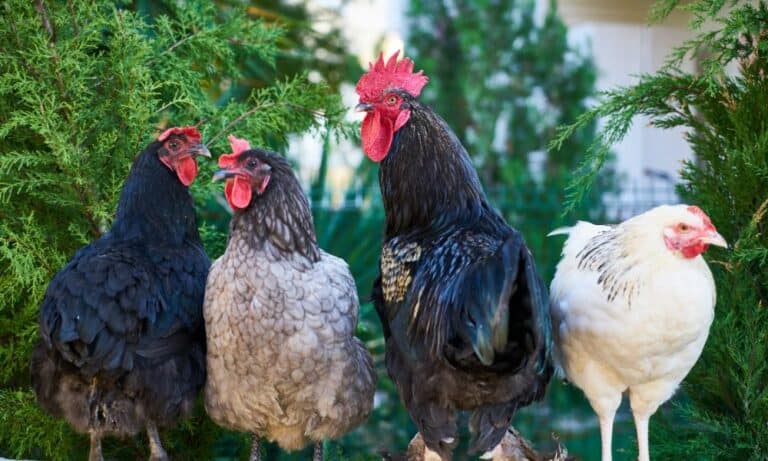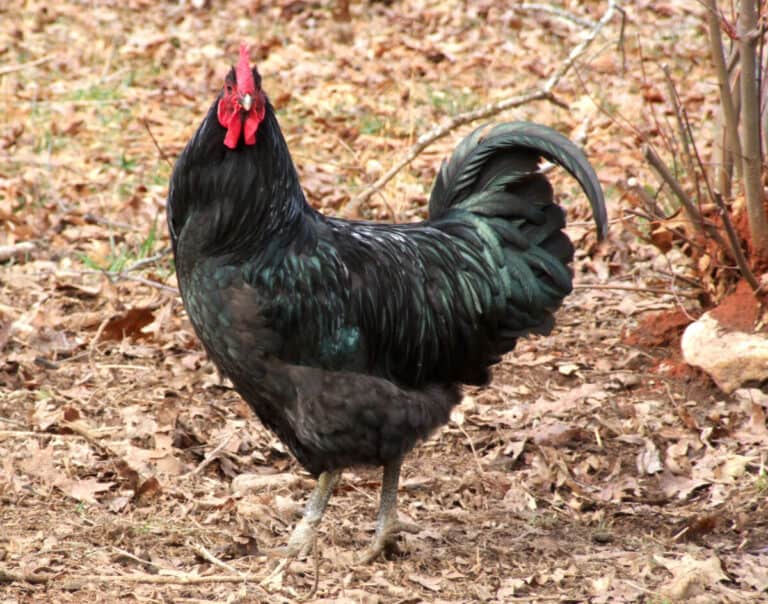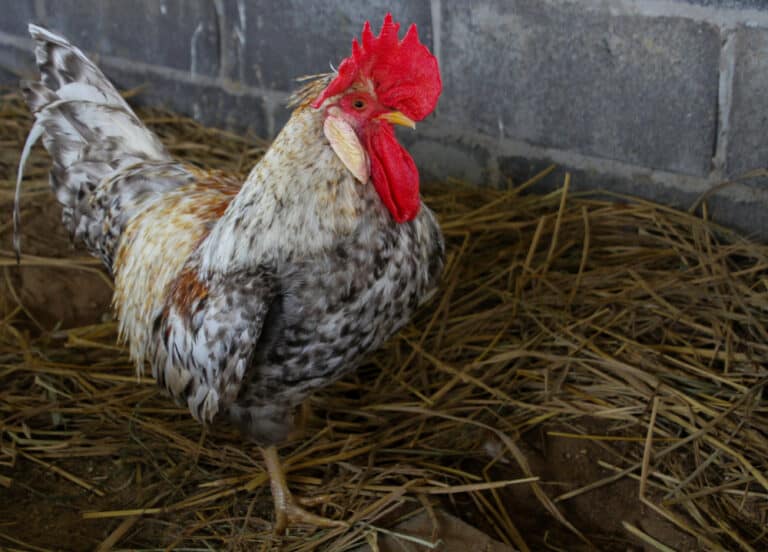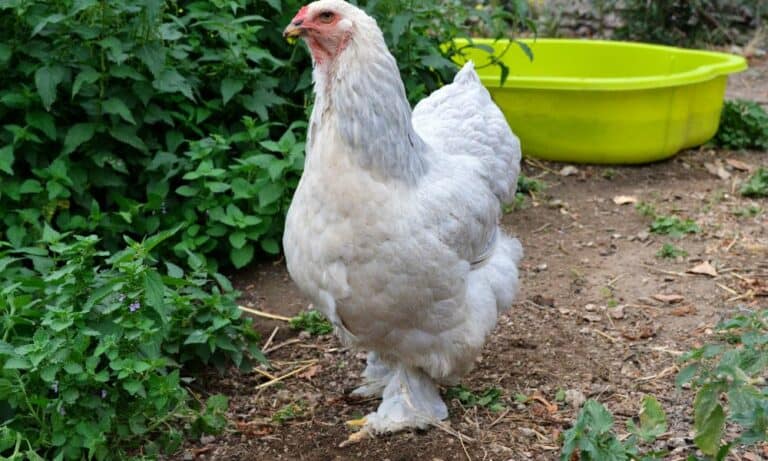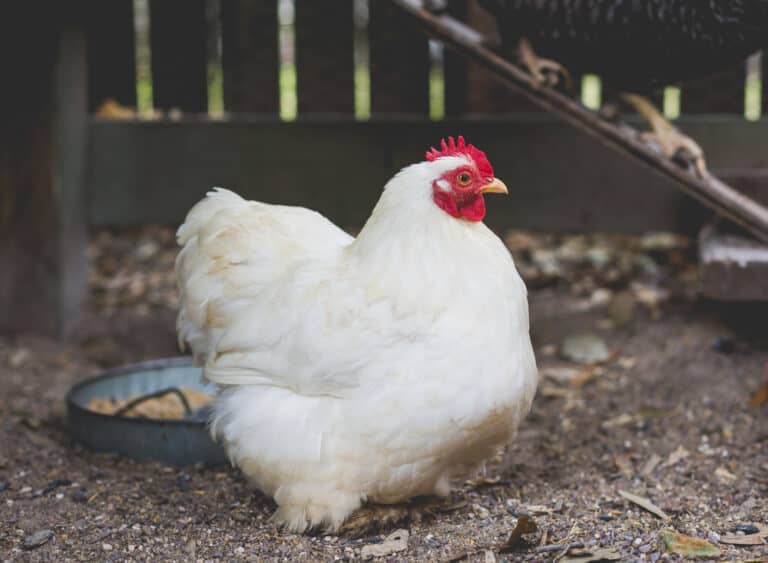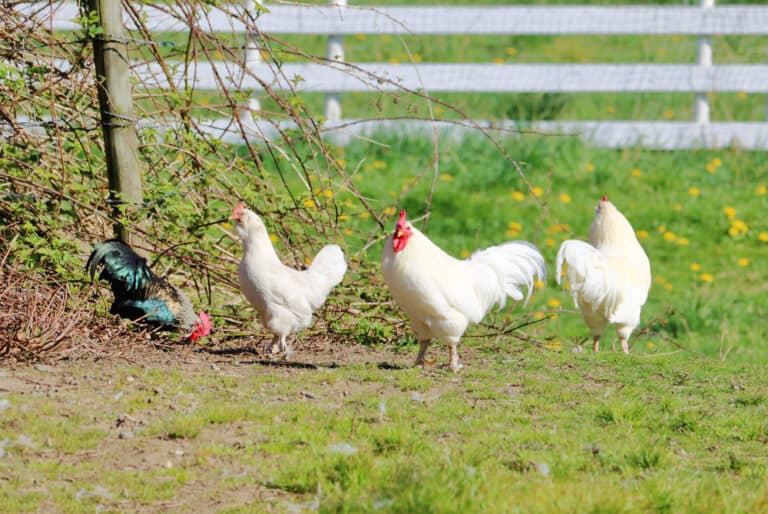Do you want a dual-purpose chicken breed for your backyard? Look no further than Docking Chickens.
Stunning, docile, and hardy, docking chickens will provide you and your family with a continuous supply of meat, eggs, and companionship.
Dorking chickens are considered one of the oldest breeds in the world, dating back to 43 AD. What’s more, they are recognized for their exceptional meat and egg production ability.
Unfortunately, they’ve become endangered in recent years, with certain varieties getting harder to find. So, what’s happening?
Well, we’ll answer this question and more in this comprehensive guide to Dorcking chicken. This guide dives into the universe of this unique and amazing chicken breed, exploring its origin, characteristics, temperament, and egg-laying capabilities.
Keep reading to determine if the Dorking chicken is the ideal bird for your flock.
Origin of Dorking Chickens
It’s difficult to pinpoint the exact origin of the Dorking Chickens or Five-toed fowls. However, some historians believe Romans under Julius Caesar brought the breed with them when they invaded Great Britain. Others think the chickens arrived later during the Norman conquest of 1066.
The breed gets its name from the market town of Dorking in Surrey County in Southeast England. The region was popular for its high-quality table poultry, and the Dorking was arguably the best and most popular chicken breed.
The Dorking chickens found their way into America in the early 1800s. In fact, in 1840, they were distributed in several areas, including Jamestown and Plymouth. And in 1849, these five-toed birds even appeared in the first poultry show In America.
The breed’s popularity continued in native England and America throughout the 1900s until the commercialization of the poultry sector.
At the time, Plymouth Rock became the preferred breed for meat production, causing Dorking to fall out of favor. Nonetheless, people still kept the Dorking for its aesthetic appeal and tasty meat.
Sadly, the number of Dorking chickens has declined over the years, with only a few birds getting registered every year. As a result, it’s nearly impossible to maintain breed purity and genetic diversity.
Also, there’s an increased risk of inbreeding, which causes them to degrade. That’s why efforts are required to improve the quality of the breed and increase their numbers.
Additionally, let’s not forget the issue of market demand. While the breed is prized for sweet and tender meats and egg production capabilities, it’s not highly consumed like other faster-growing poultry breeds.
Because of this, farmers experience some difficulties finding a market for the Dorking products, limiting the breed’s profitability and long-term sustainability.
Although Dorking chickens face many challenges today, they play a vital role in the agricultural landscape. The birds offer a distinctive blend of genetic and physical traits, which makes them perfect for backyard farms and commercial settings.
Through proper breeding and management, they can once again take the helm of the favorite chicken breed among farmers and enthusiasts.
Dorking Chicken: Physical Characteristics
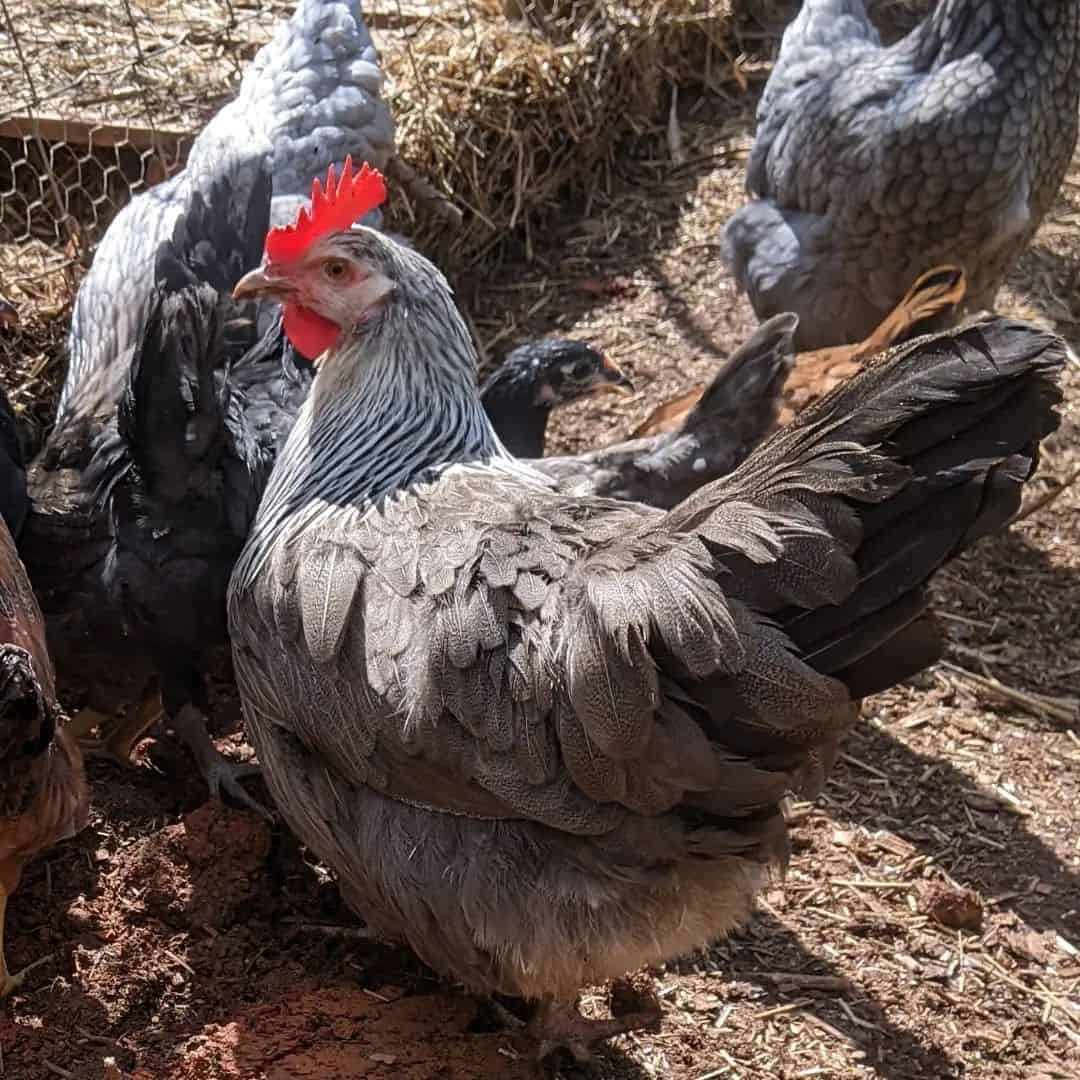
Dorking chickens come with a long back and broad chest, which gives them a rectangular or box-like shape. Their legs are short and thick, so they stand closer to the ground than most chicken breeds.
They also have a fifth toe, which is unusual since most chickens have four toes. The extra toe serves no purpose – it’s simply a sign of ancient genetics in this breed.
Despite their short stature, they can grow large and heavy, making them ideal for meat production. The males can reach anywhere from 8 to 10 lbs, while females can weigh between 6 and 8 lbs.
Dorking chickens also come in several color and pattern variations. The most recognized varieties include the White, Silver Grey, and Colored Dorking chickens.
White chickens are considered the original and most ancient variety. As for the Silver Grey Dorking, it comes from Colored fowls, often considered the largest varieties. In the table below, you will find additional information on the various Dorking varieties.
| Color Varieties | Descriptions | Beak Color | Comb Type |
| White | Pure white shade | Pinkish white beak | Single or rose comb |
| Silver Gray | A combination of silvery white and black shade | Dark horn beak | Single or rose comb |
| Colored | A blend of black, brown, salmon, and gray tones | Peak white beaks with horn streaks | Single or rose comb |
| Red | Reddish-brown, gold, creamy white, and red tones | Pinkish-white beaks with horn streaks | Single or rose comb |
| Cuckoo | Green, brown, blue, or grey spots and patterns | Pinkish-white beaks with horn streaks | Single or rose comb |
Besides these, other color variations of Dorking chickens include:
- Speckled
- Black
- Light gray
- Dark Birchen
- Clay
Dorkings are also known for their red earlobes and reddish-bay eyes. They also have a distinctive medium-to-large single or rose comb. The comb is generally upright, but in a Dorking rooster, it can appear floppy.
Their wattles are large, dropping from the sides and often bright red, contributing to the Dorking’s stunning appearance.
Males and females also have some noticeable physical traits, with male Dorkings having large tail feathers and larger combs and wattles.
Dorking Chicken: Temperament and Behavior
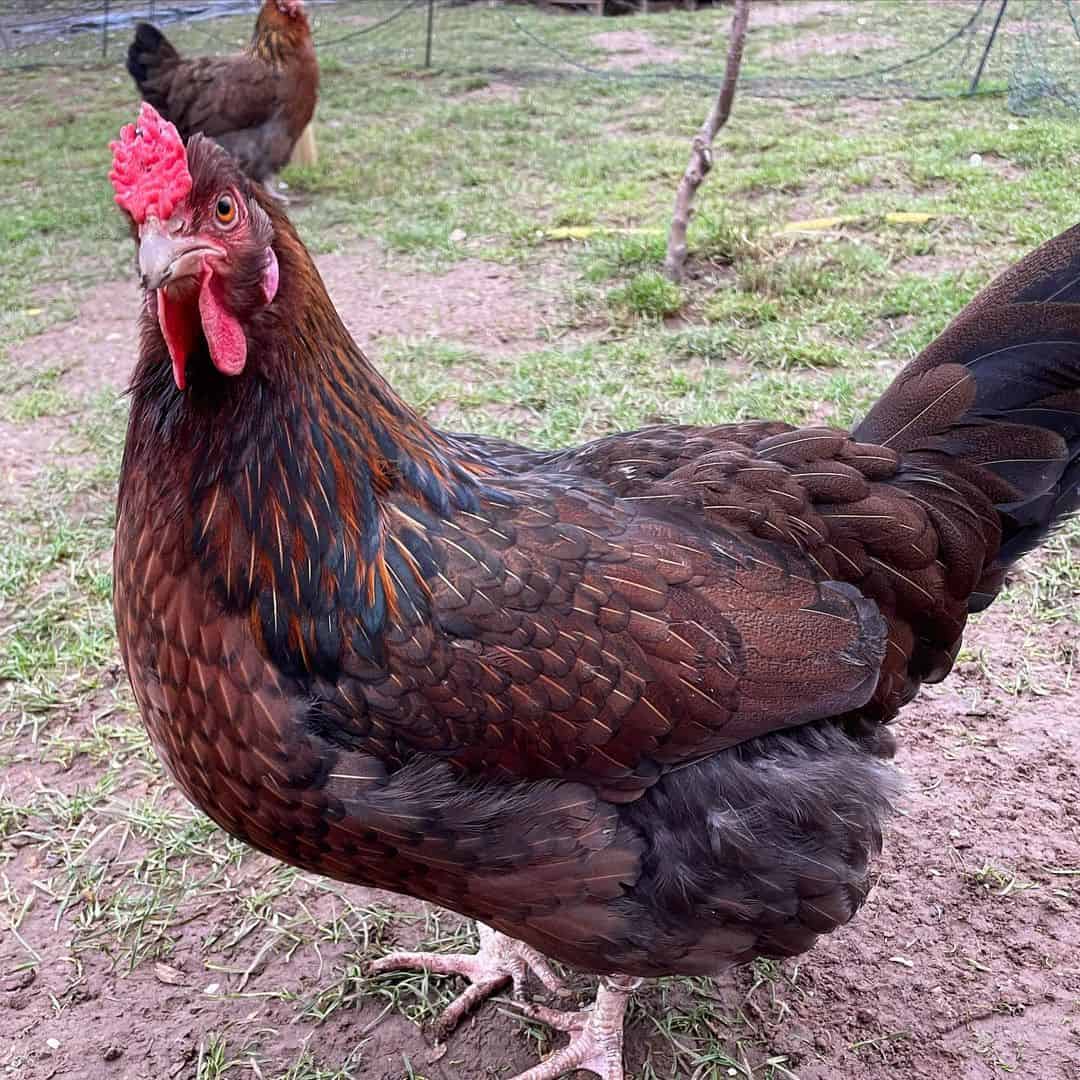
Before introducing any chicken breed to your flock, it helps to learn about its temperament and behavior. Dorking chickens are the sweethearts of the flock. They are gentle birds that get along and co-exist peacefully with other breeds. As such, they make great backyard flocks.
But there’s a downside to their peaceful and docile nature. If you keep them with aggressive breeds, like Brahama, Cornish, or Lakenvelder chickens, they might end at the bottom of the pecking order.
Most poultry farmers say Dorking chickens are loving and trusting and do well with kids. Some even let their children pet the birds’ tails and wattles or hold them. The birds are also friendly with adults but the roosters might show some sign of aggression.
These birds are good foragers but rarely wander away from home. Additionally, they are noisy as other traditional breeds, and their rosters love to crow.
Here’s something you didn’t know:
Dorking chickens can roost in trees if provided the opportunity, which is ironic considering their short legs. But it also makes sense because chickens instinctively seek high spots to roost because they want to avoid predators.
Dorking Chicken: Meat Production and Egg Production
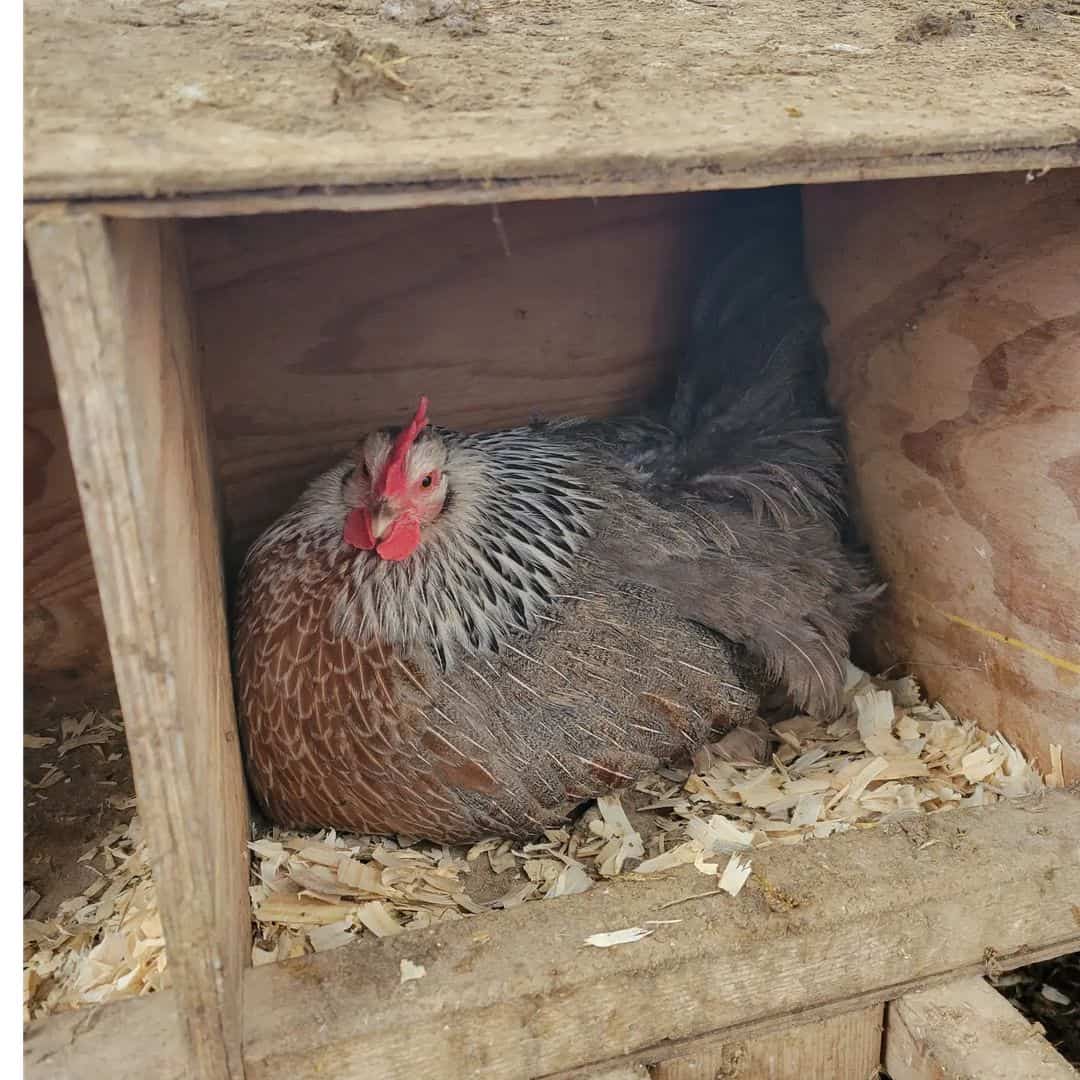
If you love white meat, you can’t say no to Dorking meat. It’s tender, delicate and comes with a fantastic flavor and taste.
The Livestock Conversancy states that the meat from this ancient breed has few peers and no superlatives. Every section of the bird is well-fleshed, including the breast, wings, and wishbone.
Some people even compare Dorking’s meat production capability with that of the Bresse Chicken, another breed loved for its high-quality meat.
If you delight in chicken skin, then you are in for a treat. The Dorking‘s yellow, white, or grey skin is eye-catching and tasty.
The only disadvantage is that you must wait about 6 to 7 months for Dorking chicken to mature. At this age, they can weigh anywhere from 6 to 10 lbs.
What about egg production?
These chickens are good layers for a breed developed for meat. In a year, Dorking hens can lay 150 to 190 medium-to-large eggs, with white or creamy color.
And the exciting thing is:
Certain strains, like the American Dorking chickens, can lay eggs during winter, unlike the European cousins who lay in spring and summer.
Dorking chickens also make great mothers because they raise their chicks for longer than other breeds. And the best part? They can stay and raise chicks of other hens.
Are Dorking Chickens a Hardy Breed?
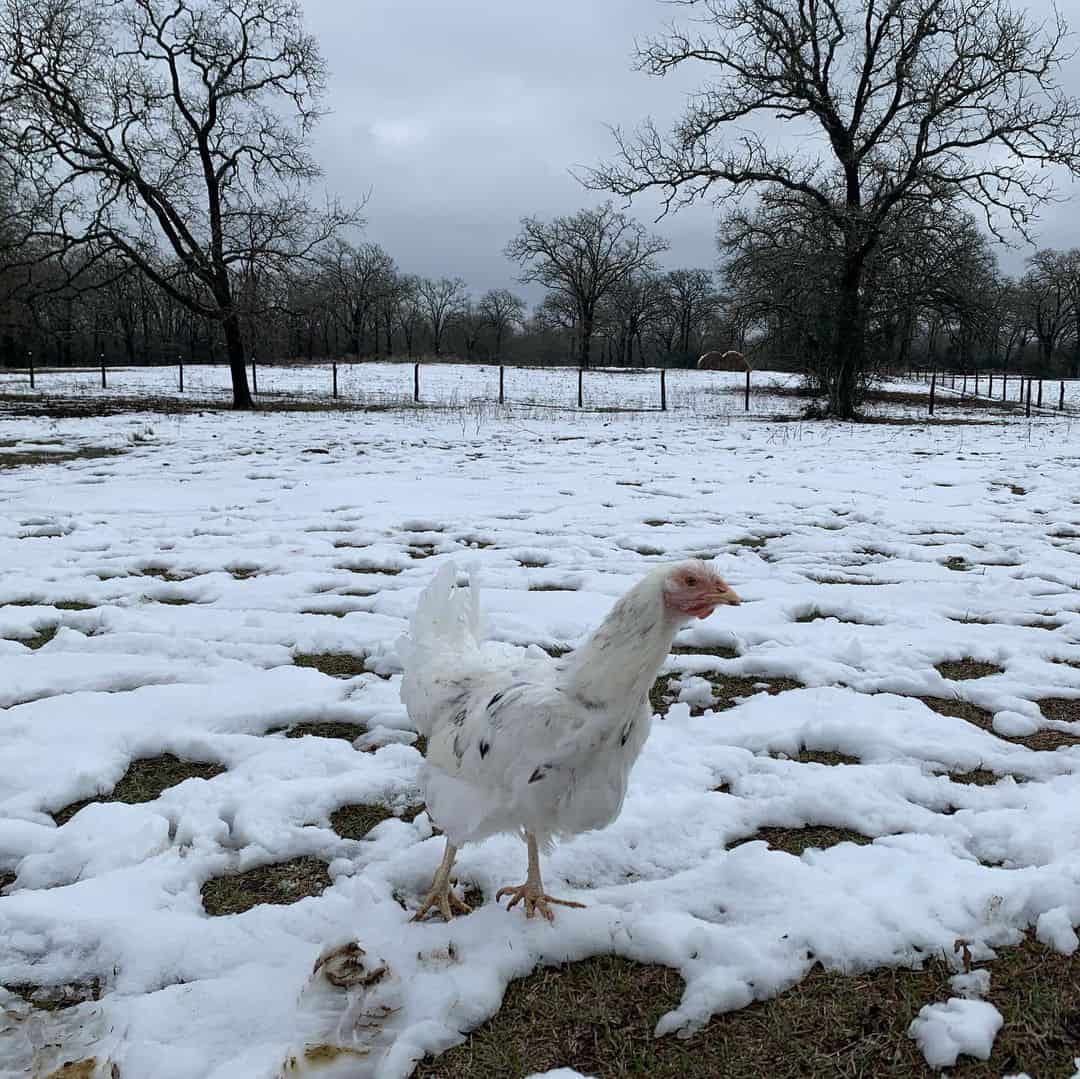
Yes, Dorking chickens are hardy and can survive in a range of environmental conditions. However, in winter, they require protection. Their long single combs and wattles are prone to frostbite. In cold climates, Dorking with rose combs will fare better, but they are hard to find.
Although Dorkings can withstand heat, they will need lots of cold water and shade to reduce body temperature.
Dorking Chicken: Health Care
Dorking chickens are resistant to a variety of common poultry infections and diseases. However, this table fowl is susceptible to respiratory infections and parasites. The breed is also prone to obesity, if you don’t provide it enough room to exercise.
To maintain proper health, provide your Dorkings with a clean-living environment and feed them well-balanced and nutritious foods. Furthermore, trim the toenail on the fifth toe (which often grows upwards) to prevent injury.
With proper care and nutrition, your Dorking chicken can live for at least 5 to 8 years.
Final Thoughts
As we wrap up, Dorking, believed to originate from Ancient Rome, is a unique chicken breed with a range of benefits. From flavor-filled meat to sweet white or creamy eggs, this breed makes an ideal bird for backyards and commercial settings.
Dorking chickens are hardy and resistant to many poultry diseases. Moreover, they are peaceful, gentle, and easy to raise with other breeds.
While their numbers have reduced over the years due to several challenges, they remain highly sought after and a vital part of the poultry industry.
We hope you enjoy this piece. If you have any concerns, leave us a message below!

